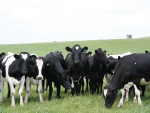Leptospirosis is a bacterial infection of humans and animals.
Farmers, their families, meat workers, vets, stock agents and rural transport truck drivers are among those most exposed to the bacteria in New Zealand, which is shed in the urine of infected animals, such as deer, pigs, cattle, sheep and dogs, as well as wild mammals (rats, mice, possums, hedgehogs) and passed on to humans through cuts in the skin or through the membranes of the eyes, nose or mouth. Overseas, flooding and poverty are the most common exposures.
In infected humans, leptospirosis presents as a serious flu-like illness, which if not treated promptly can lead to long-term health effects and in rare cases – death.
Massey University reports that leptospirosis leads to hospital admissions in 70% of cases, with half of patients experiencing longer term illness.
Symptoms of severe illness can include kidney and liver damage. Some people may be unable to return to work for months and in severe cases, unable to return at all due to symptoms of chronic fatigue. The disease can keep coming back. There is also overseas research indicating the disease may cause miscarriages in pregnant women and a cautious approach is recommended.
Livestock tend to be infected with leptospirosis strains that are well adapted to them, so stock appear unaffected yet still shed the bug in their urine. When impacted by poor nutrition, floods or other stressors, stock may show reduced production and reproduction. However, when infected with a different strain and if that is combined with severe stress then severe outbreaks of the disease can occur with death in young stock and abortion storms.
Leptospirosis is contracted mostly through exposure to the urine of infected animals, either through direct contact or via contaminated water. The bacteria enter through cuts or grazes on our skin, or through the mucous membranes of our eyes, nose and mouth.
New Zealand has one of the highest rates of leptospirosis in countries with temperate climates in the world. Last year there were 170 cases notified, nearly all in people living rurally. This is the tip of the iceberg as there are many cases missed because lepto looks like Covid or the flu and there are issues with getting a diagnosis.
Current data from Massey University shows that 70% of people suspected of having leptospirosis are not tested for it.
The annual number of notified leptospirosis cases fell dramatically between 1980 and 2000 but has fluctuated since. Unfortunately, it is on the rise again in flood-affected regions as the disease can be spread through contact with animals or with soil and water contaminated by animals.



















